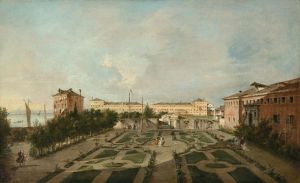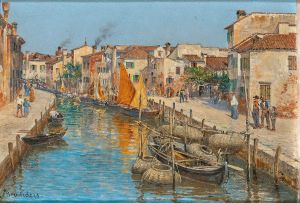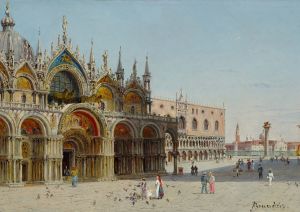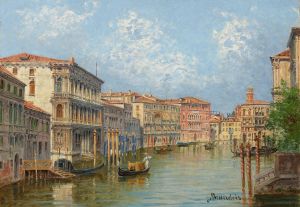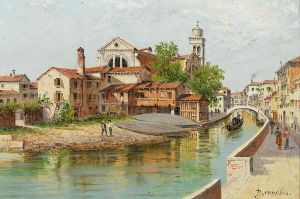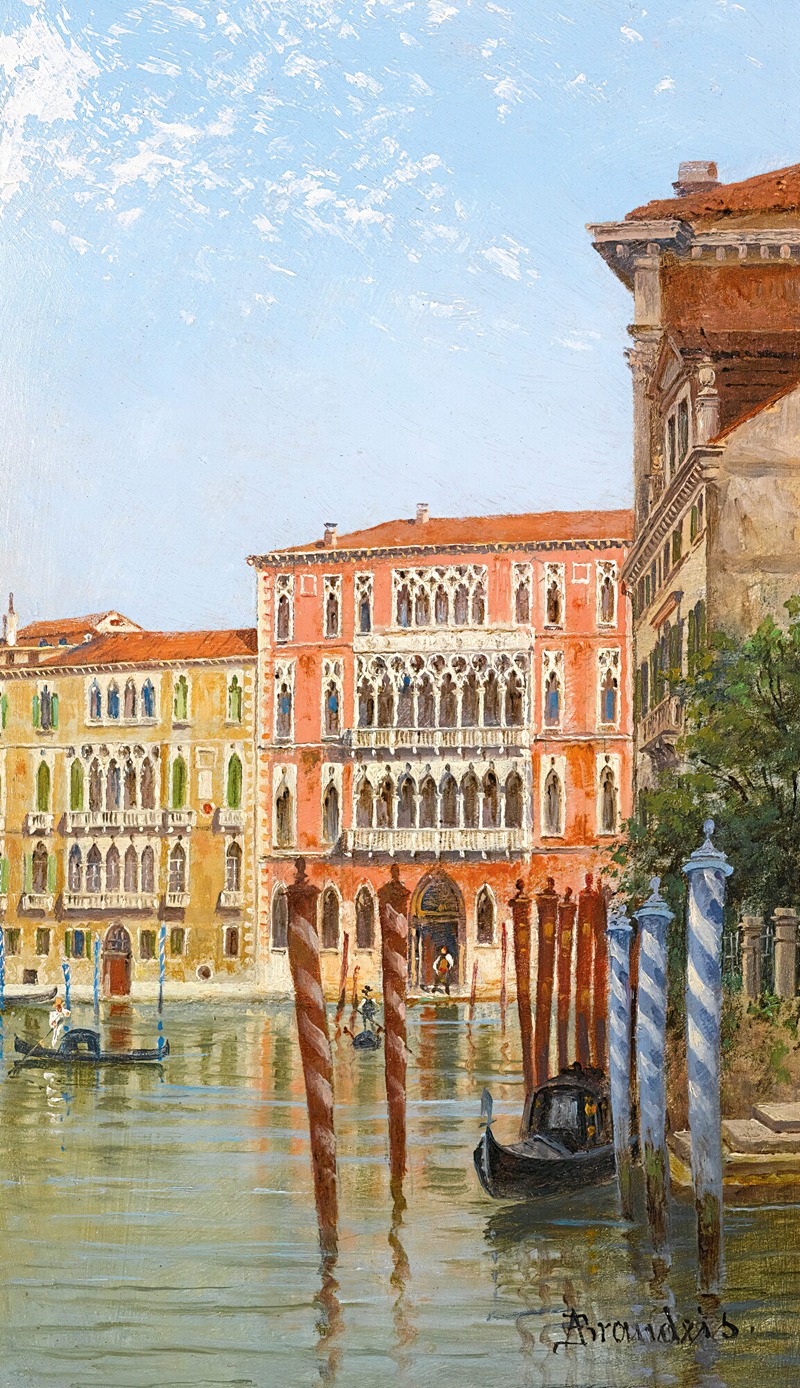
Palazzo Ca’ Foscari, Venice
A hand-painted replica of Antonietta Brandeis’s masterpiece Palazzo Ca’ Foscari, Venice, meticulously crafted by professional artists to capture the true essence of the original. Each piece is created with museum-quality canvas and rare mineral pigments, carefully painted by experienced artists with delicate brushstrokes and rich, layered colors to perfectly recreate the texture of the original artwork. Unlike machine-printed reproductions, this hand-painted version brings the painting to life, infused with the artist’s emotions and skill in every stroke. Whether for personal collection or home decoration, it instantly elevates the artistic atmosphere of any space.
Antonietta Brandeis was a Czech-Italian painter known for her detailed and vibrant depictions of Venetian architecture and landscapes. One of her notable works is "Palazzo Ca’ Foscari, Venice," which captures the grandeur and intricate beauty of the Ca’ Foscari palace, a significant architectural landmark in Venice, Italy.
Ca’ Foscari is a Gothic-style palace located on the Grand Canal in Venice. It was commissioned by the Doge Francesco Foscari in 1453 and designed by the architect Bartolomeo Bon. The palace is renowned for its elegant façade, which features a series of pointed arches and intricate stonework that exemplify the Venetian Gothic style. Over the centuries, Ca’ Foscari has served various purposes, including as a residence for the Foscari family and later as an academic institution. Today, it is part of the Ca’ Foscari University of Venice, one of Italy’s most prestigious universities.
Antonietta Brandeis, born in 1849 in Miskovice, Bohemia, moved to Venice to study at the Academy of Fine Arts. She became one of the few women of her time to gain recognition in the field of painting. Brandeis is particularly celebrated for her vedute, a genre of highly detailed, usually large-scale paintings of cityscapes or other vistas. Her works are characterized by their precision and attention to architectural detail, capturing the essence of Venetian life and its iconic structures.
In "Palazzo Ca’ Foscari, Venice," Brandeis employs her signature style to depict the palace with remarkable accuracy and detail. The painting highlights the palace’s Gothic features, such as its ornate windows and the decorative patterns that adorn its façade. The use of light and shadow in the painting brings out the texture of the stonework, while the reflection of the palace in the waters of the Grand Canal adds a dynamic element to the composition.
Brandeis’s work is appreciated for its ability to convey the atmosphere of Venice during the late 19th and early 20th centuries. Her paintings often include elements of daily life, such as gondolas gliding along the canals or people going about their daily activities, which provide a glimpse into the vibrant culture of the city. Through her art, Brandeis not only documented the architectural beauty of Venice but also captured the spirit of the city, making her works valuable both artistically and historically.
"Palazzo Ca’ Foscari, Venice" is a testament to Brandeis’s skill as a painter and her deep appreciation for the city of Venice. Her ability to render architectural details with such precision and her talent for capturing the unique light and atmosphere of Venice have earned her a lasting place in the history of art. Today, her paintings are held in various collections and continue to be admired by art enthusiasts and historians alike for their beauty and historical significance.







